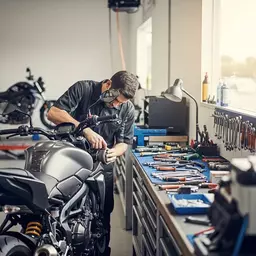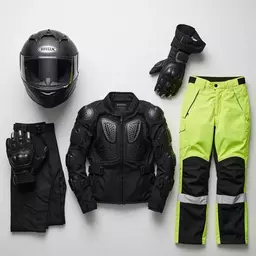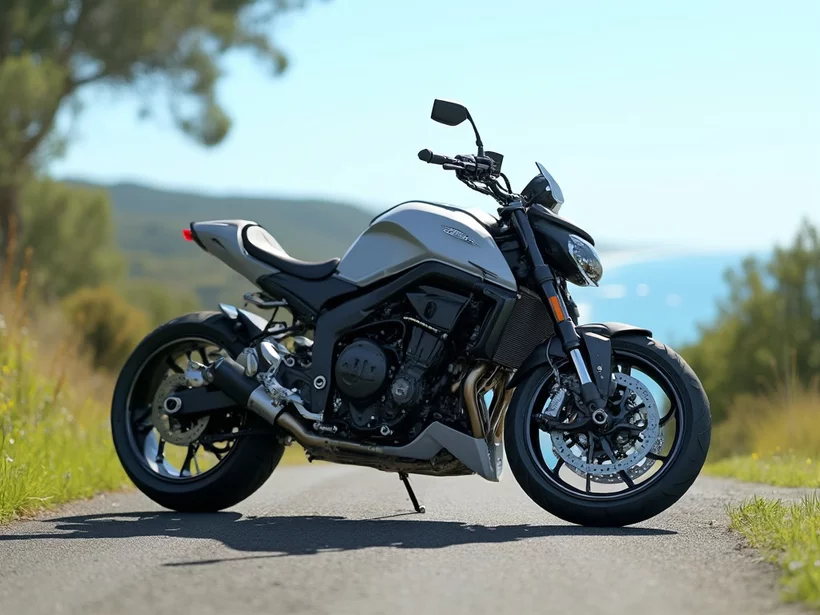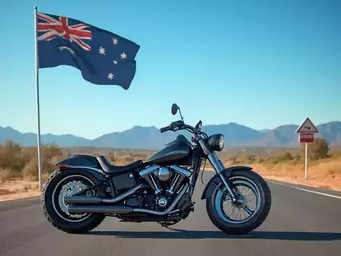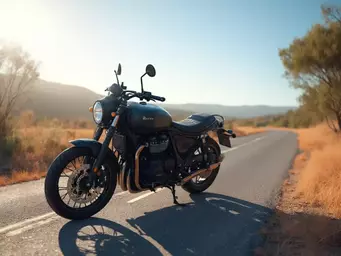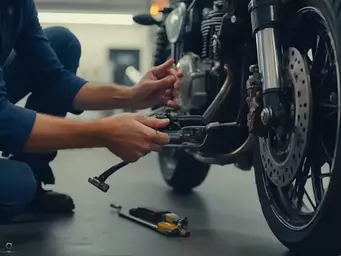Motorcycle Riding in Australia: Guidelines
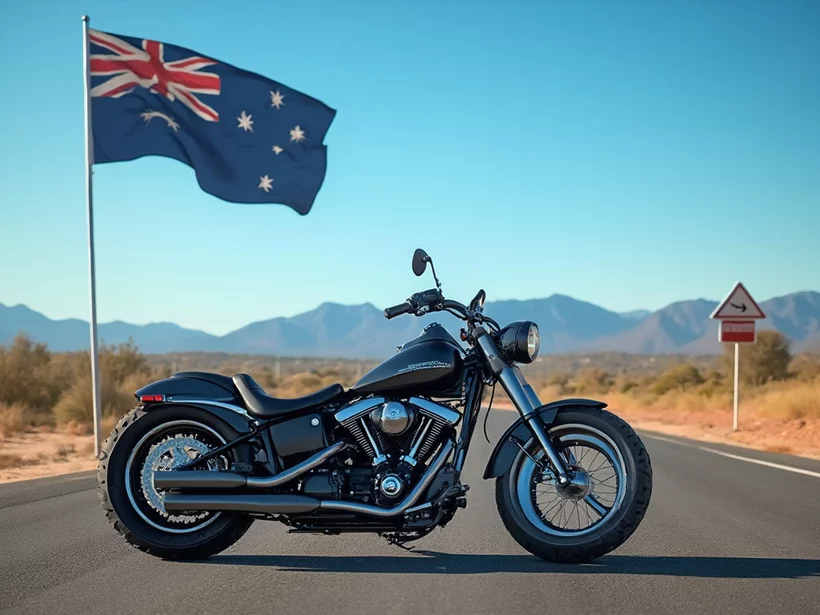
As you prepare to hit the open road on your motorcycle, understanding the legal landscape is essential for a safe and enjoyable ride. With varying regulations across Australia, being informed can help you navigate the journey confidently. Here are the key takeaways you should know:
What You Will Learn
- Motorcycle registration is mandatory across all states, ensuring documentation and promoting safety.
- The licensing process typically involves a learner's permit, provisional license, and full license, with specific state requirements.
- Common mistakes in licensing include overlooking required tests, ignoring state-specific rules, and failing to maintain proper insurance.
- P-plate restrictions may include limits on engine capacity and speed, and a prohibition on carrying passengers.
Motorcycle Licensing Process in Australia: State-by-State Overview
This visual summarizes the key differences in motorcycle licensing across Australian states, including costs and unique rules.
A Comprehensive Overview of Motorcycle Riding Legislation in Australia
As a motorbike enthusiast, I know how thrilling it is to hit the open road! But before you rev up that engine, it's crucial to understand the laws governing motorcycle riding in Australia. This comprehensive overview will help you navigate the essential regulations, from registration and licensing to safety practices that keep you on the right side of the law.
Motorcycle legislation varies across states, which can be a bit confusing. That's why I’m here to guide you through the legal framework that every rider should know! With the right knowledge, you can ride with confidence and peace of mind.
Understanding the Legal Framework for Motorcycle Riding
The legal framework for motorcycle riding in Australia includes several key components. First and foremost, registration is mandatory for all motorcycles. This not only ensures that your bike is documented but also aids in road safety. Secondly, let's not forget about the licensing requirements. Each state has specific criteria that you must meet to legally ride on public roads.
- Motorcycle registration: Required for all bikes.
- Licensing: Must pass tests to obtain a motorcycle license.
- Insurance: Third-party insurance is often required.
Understanding these requirements is essential for any rider. They ensure that you not only comply with the law but also contribute to safer roads for everyone. So, whether you’re a newbie or a seasoned rider, take the time to familiarize yourself with these laws!
Motorcycle Licensing Process in Australia
Now, let’s dive into the motorcycle licensing process! Each state and territory in Australia has its own licensing steps and classifications, which can make it a bit tricky. Generally, the process involves obtaining a learner’s permit, progressing to a provisional license, and eventually earning a full license.
- 1. Learner's Permit: Obtain your learner's permit after passing a basic knowledge test.
- 2. Provisional License: Gain experience and pass a riding test to upgrade.
- 3. Full License: After meeting specific conditions, you can apply for your full license!
It’s important to know that some states may have additional requirements or variations in their processes. Always check your local regulations to avoid any surprises!
State-by-State Comparison of Motorcycle Licenses
Below is a detailed comparison of motorcycle licensing requirements across each Australian state. This table highlights the key differences, including costs and unique road rules:
| State | License Type | Cost | Unique Road Rules |
|---|---|---|---|
| NSW | Rider Learner License | $30 | Must wear L-plates |
| VIC | Motorcycle Learner Permit | $24 | Must display learner plates |
| QLD | Q-Ride | $120 | Must complete a Q-Ride course |
| WA | Motorcycle Learner’s Permit | $20 | Specific speed limit restrictions |
By understanding these differences, you can better navigate the licensing landscape in Australia. Just remember, knowing your state’s regulations is key to a smooth riding experience!
Common Licensing Mistakes to Avoid
New riders often face challenges when obtaining their motorcycle license. Here are some common pitfalls you should be aware of:
- Overlooking the required tests: Always be prepared for both written and practical assessments.
- Ignoring state-specific rules: Regulations can vary by location—know yours!
- Failing to maintain correct insurance: Ensure you have the right coverage before you ride.
Avoiding these mistakes will not only save you time but also ensure you’re legally compliant while enjoying your ride. Remember, knowledge is power!
Understanding P-Plate Restrictions and License Classes
Finally, let’s talk about the different classes of motorcycle licenses and the restrictions that come with P-plates. Riders on P-plates usually face limitations such as:
- Restricted engine capacity
- Prohibition on carrying passengers
- Lower speed limits in certain states
Understanding these restrictions is crucial for your safety and compliance with the law. Make sure to keep up with any updates, as regulations may change over time!
Pro Tip
Did you know? Regularly checking your motorcycle's tire pressure can significantly enhance your safety and performance on the road. Properly inflated tires improve handling and fuel efficiency, making your rides smoother and more enjoyable. Before every ride, take a moment to ensure your tires are in top condition!
FAQs About Motorcycle Riding Legislation in Australia
Summarizing the Essential Steps to Riding Legally in Australia
As you embark on your journey as a motorbike rider in Australia, understanding the legal framework is not just a formality; it’s your first step toward a fulfilling riding experience. From registration to licensing and safety practices, every element plays a crucial role in ensuring your safety and compliance on the road. For instance, the NSW Motorcycle Riders' Handbook provides detailed information on these essentials for riders in New South Wales. It's worth taking the time to familiarize yourself with these essentials, as they form the backbone of responsible motorcycling.
Moreover, regular maintenance is equally important. Keeping your bike in top condition not only boosts its performance but also enhances your overall safety. The Australian Road Safety Data Hub offers valuable insights into motorcycle safety, emphasizing the role of safe vehicles in accident prevention. At Motorbikes Australia, we believe that informed riders are confident riders, and that’s what we aim to foster in our community!
Encouragement to Ride Responsibly
Riding responsibly isn't just a suggestion; it’s a commitment that every rider should embrace. By prioritizing safety and legality, you not only protect yourself but also contribute to a safer riding culture. For example, Victoria Police provides extensive resources on motorcycle safety, highlighting the importance of rider responsibility. Here are some key practices to incorporate:
- Always wear protective gear: Make it a habit to wear your helmet and other protective clothing.
- Obey traffic laws: Familiarize yourself with local regulations, especially regarding lane filtering and P-Plate restrictions.
- Perform regular maintenance: Schedule regular check-ups for your motorcycle to ensure optimal performance.
- Stay aware: Keep an eye on your surroundings and anticipate the actions of other drivers.
Engaging in these practices not only enhances your safety but also shows respect for fellow road users. So, let’s make every ride not just about the thrill but also about responsibility!
Access Additional Resources for Continuous Learning
The journey doesn't end once you’ve obtained your motorcycle license. Continuous learning is vital to staying safe and informed. I encourage you to explore official resources and motorcycle safety organizations for further guidance. Here are some valuable links to consider:
- Motorcycle Riders Association (MRA) - Offers a wealth of information on safety, training, and legislation.
- Road Safety Commission - Provides updates on road rules and safety campaigns.
- Transport for New South Wales - Moto - Focuses on motorcycle events and training programs.
Investing time in these resources will not only enhance your knowledge but also your confidence on the bike!
Exploring Local Riding Routes and Events
Now that you’re equipped with the essentials, it’s time to hit the road! Exploring local riding routes is a fantastic way to enjoy the freedom that motorcycling offers. Whether you’re looking for scenic coastal rides or winding mountain tracks, Australia has it all! Here are a few popular routes to check out:
- The Grand Pacific Drive: A stunning coastal route from Sydney to Wollongong.
- Great Ocean Road: Iconic views and thrilling twists along the southern coast of Victoria.
- The Snowy Mountains: A beautiful ride with breathtaking landscapes and fresh mountain air.
Additionally, don’t miss out on local motorcycle events and meetups. Engaging with the community is not only fun but also a great way to share experiences and learn from fellow riders. What’s your favorite local ride? Let’s keep the conversation going!
Recap of Key Points
Here is a quick recap of the important points discussed in the article:
- Motorcycle registration is mandatory for all riders in Australia.
- Each state has unique licensing processes, typically involving a learner’s permit, provisional license, and full license.
- Be aware of common licensing mistakes, such as overlooking required tests and not maintaining correct insurance.
- P-Plate restrictions often include limitations on engine capacity and carrying passengers.
- Always wear protective gear, obey traffic laws, and perform regular maintenance on your motorcycle.
- Engage with local riding communities and resources for continuous learning and support.

